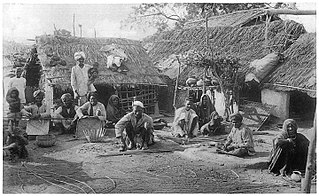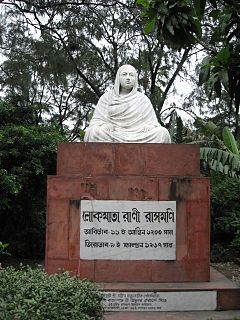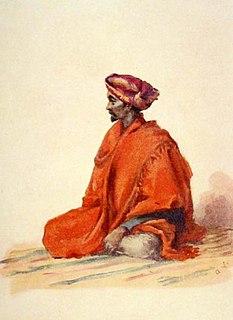
Caste is a form of social stratification characterised by endogamy, hereditary transmission of a style of life which often includes an occupation, ritual status in a hierarchy, and customary social interaction and exclusion based on cultural notions of purity and pollution. Its paradigmatic ethnographic example is the division of India's Hindu society into rigid social groups, with roots in India's ancient history and persisting to the present time. However, the economic significance of the caste system in India has been declining as a result of urbanisation and affirmative action programs. A subject of much scholarship by sociologists and anthropologists, the Hindu caste system is sometimes used as an analogical basis for the study of caste-like social divisions existing outside Hinduism and India. The term "caste" is also applied to morphological groupings in eusocial insects such as ants, bees, and termites.

The Adivasi are tribes of the Indian subcontinent who are considered indigenous to places within India. The term is a modern Sanskrit word coined in the 1930s by tribal political activists to give an indigenous identity to tribals by claiming indigenous origin. The term is also used for ethnic minorities, such as Chakmas of Bangladesh, Khas of Nepal, and Vedda of Sri Lanka. However, the government of India does not officially recognise tribes as indigenous people. India ratified the International Labour Organization (ILO) Convention 107 on Indigenous and Tribal Peoples of the United Nations (1957). In 1989, India refused to sign the ILO Convention 169. Most of these groups are included in the Scheduled Tribe category under constitutional provisions in India.
Dalit, also known as untouchable, is a name for people belonging to the lowest stratum castes in India. Dalits were excluded from the four-fold varna system of Hinduism and were seen as forming a fifth varna, also known by the name of Panchama. Dalits now profess various religious beliefs, including Hinduism, Buddhism, Sikhism, Christianity, Islam and various other belief systems. Scheduled Castes is the official term for Dalits as per the Constitution of India.
Anti-Brahminism or Non-Brahminism is a South Asian movement in opposition to caste-based discrimination and hierarchical social order which places Brahmins at its highest position. Initial expressions of Anti-Brahminism emerged from instances of pre-colonial opposition to the caste system in India, ideological influences during the colonial period, and from a colonialist Protestant Christian understanding of religion in the 19th century, which viewed "Brahminism" as a corrupted religion imposed on the Indian population. Reformist Hindus, but also Ambedkar, structured their criticism along similar lines following the 19th century criticism of "Brahminism," opposing the dominant position Brahmins had acquired by the time of British rule in the 19th century.
Reservation is a system of affirmative action in India that provides historically disadvantaged groups representation in education, employment and politics. Based on provisions in the Indian Constitution, it allows the Union Government and also the States and Territories of India to set reserved quotas or seats, which lower the qualifications needed in exams, job openings etc. for "socially and educationally backward citizens."

Castes are rigid social groups characterized by hereditary transmission of life style, occupation and social status. The caste system in India has its origins in ancient India, and was transformed by various ruling elites in medieval, early-modern, and modern India, especially the Mughal Empire and the British Raj. The caste system consists of two different concepts, varna and jati, which may be regarded as different levels of analysis.
Bathgama a Sri Lankan caste predominantly in the Kandyan provinces, the traditional occupation of which was the cultivation of rice paddy. Hence the name Bath (rice) and Gama (village) in the Sinhala language.

Mahishya, also spelled Mahisya, is a Bengali Hindu traditionally agrarian caste, and formed the largest caste in undivided Bengal. Mahishyas are considered as Forward caste.
Castes in Indian society refer to a social group where membership is decided by birth. Members of such local groups are mostly endogamous, i.e. they tend to enter into marital relationships among themselves. They often have related political preferences.

The early history of slavery in India is contested because it depends on the translations of terms such as dasa and dasyu. Greek writer Megasthenes in his work Indika, while describing Mauryan empire states that slavery was banned in Indian society. However, some sources suggest that slavery was likely to have been a widespread institution in ancient India by the lifetime of the Buddha, and perhaps even as far back as the Vedic period.

Satyashodhak Samaj was a social reform society founded by Jyotiba Phule in Pune, Maharashtra, on 24 September 1873. It espoused a mission of education and increased social rights and political access for underprivileged groups, focused especially on women, Shudras, and Dalits, in Maharashtra. Jyotirao's wife Savitribai was the head of women's section of the society. The Samaj disbanded during the 1930s as leaders left to join the Indian National Congress party.
Social class in Sri Lanka is often described as casteless, though caste is still found on the island in both a symbolic and a practical sense. Caste is also used in an analogous sense to refer to the new social class divisions that have appeared in recent decades. The combination of ethnic nationalist movements that saw caste as an island-wide dividing tool, strong emphasis on providing access to education and healthcare regardless of background, and historic lack of discrimination among the colonial civil service played a factor in eradicating the caste system in most sectors of the island's society. Although the Buddhist culture actively fought against all forms of class discrimination, many Buddhist organizations used caste as a method to extract surplus from temple property.

Gentry are "well-born, genteel and well-bred people" of high social class, especially in the past. Gentry, in its widest connotation, refers to people of good social position connected to landed estates, upper levels of the clergy, and "gentle" families of long descent who in some cases never obtained the official right to bear a coat of arms. The gentry largely consisted of landowners who could live entirely from rental income, or at least had a country estate; some were gentleman farmers. In the United Kingdom, the term gentry refers to the landed gentry: the majority of the land-owning social class who typically had a coat of arms, but did not have a peerage. The adjective "patrician" describes in comparison other analogous traditional social elite strata based in cities, such as free cities of Italy, and the free imperial cities of Germany, Switzerland, and the Hanseatic League.

Edo society refers to the society of Japan under the rule of the Tokugawa Shogunate during the Edo period from 1603 to 1868.
Khandayat or Khandait is a landed militia caste from Odisha, East india. They were feudal chiefs, military generals, zamindars, large land holders and agriculturalists. Numerically they are the largest caste of the state.

Tailoring is a profession which is done by the people of different religions and communities of the world for their livelihood or as business in modern times. Talking about the old times, the tailoring business can be seen among the communities. In the Indian tradition, it was customary to wrap it over the body rather than wearing it. Nowadays wrap clothes tradition is limited. Most of the people prefer to wear stitched clothes.
Feudalism in contemporary Pakistan usually refers to the power and influence of large landowning families, particularly through very large estates and in more remote areas. The adjective "feudal" in the context of Pakistan has been used to mean "a relatively small group of politically active and powerful landowners". "Feudal attitude" refers to "a combination of arrogance and entitlement". According to the Pakistan Institute of Labor Education and Research (PILER), five percent of agricultural households in Pakistan own nearly two-thirds of Pakistan's farmland.
Bangladesh did not exist as a distinct geographic and ethnic unity until independence. The region had been a part of Bangla, Bengali: বাংলা/বঙ্গ, whose history dates back to four millennia, and during the British period it formed the Bengal province, the eastern part of the British Indian Empire, which was dominated by the British rulers and Hindu professional, commercial, and landed elites. After the establishment of Pakistan in 1947, present-day Bangladesh came under the hegemony of the non-Bengali Muslim elites of the West Wing of Pakistan. The establishment of Bangladesh, therefore, implied the formation of both a new nation and a new social order.
Rajputs in Bihar are members of the Rajput community living in the eastern Indian state of Bihar. Locally they are sometimes called Babu Saheb which is a term or sobriquet used mainly in the Indian states of Bihar, Uttar Pradesh and Jharkhand. They traditionally formed part of the royalty and feudal elite respectively.
Kondaikatti Velaalar is a Tamil caste who traditionally pursued agriculture as a profession in the Indian states of Tamil Nadu, Kerala and northeastern parts of Sri Lanka. They were originally settled in Tondaimandalam but spread to other areas in south India over time. Since they historically used the Mudaliar title, they are sometimes referred to as Thondaimandala Vellala Mudaliars or simply Thondaimandala Mudali. However, Kathleen Gough considers them to be a separate subcaste of the Thondaimandala Mudali, as does Susan Neild.








